The Art of Choosing the Right Coloring Markers
Coloring has become a popular pastime for people of all ages.
The demand for quality coloring supplies has increased with the rise of adult coloring books.
One of the most essential tools for coloring is...
Nope, it's not coloring pencils!
They are classic for coloring, but only some have the patience to work with pencils.
I know you understand what I'm talking about :)
Markers are one of the most essential tools for coloring nowadays.
Still, with so many options available, it can be overwhelming to choose the right ones.
There are markers for designers and artists, alcohol and water-based, expensive and cheap.
Which marker is best for coloring for hobbyists?
So, let me show you the 5 most critical key factors to consider when choosing the right coloring markers. Ready? Let’s go!
The first thing you need to pay attention to is the Marker's Tip Type.
The type of marker's tip is the first thing to consider when choosing coloring markers.
There are three main types of tips: bullet, chisel, and brush.
Bullet tips are rounded and are great for coloring small areas and creating fine lines.
Chisel tips have a flat edge and are ideal for filling larger areas and creating thick lines.
Brush tips are flexible and mimic the effect of a paintbrush, making them perfect for blending and creating different textures.
The Tombow water-based markers feature a combination of bullet and brush tips.
When it comes to markers, combining chisel and brush tips provides the best of both worlds.
This type of marker is the most convenient to use out of all the markers in my collection.
Choosing the right coloring tip can make all the difference in the outcome of your work.
So, remember to keep in mind the type of coloring you will be doing and select the tip type that best suits your needs.
The second thing you need to think of is Ink Type and Quality.
The ink type and quality are other crucial factors when choosing coloring markers.
Look for markers with high-quality, low-odor, non-toxic, vibrant ink that is acid-free (fade-resistant) and does not bleed through the paper.
Alcohol-based markers are known for their vibrant colors and blendability.
In contrast, water-based markers are more suitable for a softer, watercolor effect.
Which is better, watercolor or alcohol markers?
It's essential to determine the coloring you plan to do.
Suppose you're printing your coloring pages on professional paper like marker paper.
In that case, you can safely use alcohol markers for their vibrant colors and effortless blendability.
But suppose you're printing on watercolor paper or coloring inside a book with thin 80-lb paper. In that case, it's better to use water-based markers.
Alcohol markers could seep through this type of paper and create blots.
I believe the brush tip of the Tombow markers is the best among water-based markers.
Both types of markers are fun, blendable, and versatile, so choose what works best for you, or try them all!
By the way, check if the markers are refillable, as this can save you money in the long run.
Here are some cool tricks for revitalizing your old non-refillable markers and giving them a new lease on life.
One of my old videos showcases an interesting coloring technique using water-based Tombow markers.
The third thing is the Color Range.
Another important consideration is the color range of markers.
Some sets may have a limited range of colors, while others may have various shades and tones.
A smaller set with primary colors may be sufficient if you’re just starting with coloring.
However, if you want to create more intricate and detailed pieces, a more extensive set with a wide range of colors will give you more options.
Also, it's important to keep in mind that the subject of your coloring pages is significant, too.
If the pages feature people, choose skin tone markers.
For romantic or kawaii themes, opt for pastel colors.
Finally, bright, natural colors would be a good choice if the pages depict cartoons or something funny and cute.
Photo by Anete Lusina
The next thing is Comfort and Grip.
Since coloring can be a time-consuming activity, it's important to choose markers that are comfortable to hold and use.
As a professional artist who spends most of my day with a pencil or brush in my hand, I suffer from Carpal tunnel syndrome, and I don't want you to experience this pain, either.
Look for markers with a comfortable grip and a good weight distribution.
This will prevent hand fatigue and allow you to color for more extended periods without discomfort.
Some markers also have a triangular shape, which can provide a better grip and prevent them from rolling off your desk.
And last but not least, pay attention to the price.
While it may be tempting to choose the cheapest option, keep in mind that quality markers may be more expensive.
However, investing in good quality markers can save you money in the long run, as they will last longer and provide better results.
At the same time, I need to be honest here.
I have all sorts of markers on my art desk, including alcohol markers.
Professional markers are not drastically better than basic ones.
It's best to start with mid-priced markers and then move on to Copic if you need more capabilities.
I've been dreaming about owning a nice set of Molotov acrylic markers for a while, but I still can't afford them.
Therefore, set up your budget and choose markers that offer the best value for your money.
A small chunk of my marker collection :)
So, now you have the power to choose the perfect coloring markers that reflect your needs and preferences.
Don't hesitate to explore various brands and types to discover the ones that resonate with you. Already tried any types of markers?
Share your marker tips and discoveries in the comments so we can all learn something new and invest in something proven.
Do you still have questions about choosing markers like a Pro?
Let me gather them all up and answer them in one convenient spot!
Which marker is best for coloring?
As I already said, the choice of the "best" markers for coloring depends on your personal preferences and needs.
However, here are a few highly regarded options that are popular among artists and hobbyists:
These alcohol-based markers are known for their vibrant colors, smooth blending, and refillable design. They're particularly popular for anime and manga artists.
Type: Alcohol-based
Pros:
- High Quality: Copic markers are known for their superior quality, vibrant colors, smooth blending, and long-lasting performance.
- Refillable: These markers can be refilled, making them a more sustainable and cost-effective choice in the long run.
-Replaceable Nibs: Copics' nibs are replaceable, offering flexibility and extending the marker's life.
- Color Range: They offer an extensive color range (358 colors), allowing for precise color matching and creativity.
Cons:
- Price: Copic markers are on the higher end of the price spectrum, making them a significant investment.
Winsor & Newton Promarkers are highly popular among artists due to their vibrant, bold colors and smooth, consistent ink flow.
These markers feature dual tips: a chisel tip for broad strokes and a fine tip for detailed work, making them versatile tools for a wide range of art projects.
Winsor & Newton is a trusted name in the art world, offering high-quality products suitable for both professional artists and hobbyists.
Type: Alcohol-based
Pros:
- Professional Quality: Prismacolor markers offer rich, vibrant colors and smooth application, making them suitable for professional artists.
- Dual Tips: They feature a chisel tip on one end and a fine tip on the other, providing versatility in line width.
- Great Blending: Known for excellent blending and layering, they are ideal for detailed work and gradients.
Cons:
- Price: These markers are on the pricier side, similar to Copic markers.
- Limited Refilling Options: While some Prismacolor markers are refillable, the options are limited compared to other brands.
The Ohuhu markers have become popular in the art community, particularly among hobbyists and beginners.
Renowned for their affordability without compromising on quality, these alcohol-based markers provide vibrant colors and smooth application, similar to high-end brands.
Ideal for coloring books, illustrations, and manga art, Ohuhu markers are an excellent choice for those seeking quality markers at a budget-friendly price point.
Type: Alcohol-based
Pros:
- Affordable: Ohuhu markers offer a good balance between quality and price, which makes them a popular choice for beginners and hobbyists.
- Decent Quality: They provide vibrant colors and good blending capabilities, comparable to more expensive brands.
- Variety: These markers come in various sets, including brush and chisel tips, and offer a broad color range.
- Includes Extras: Many sets come with extras like carrying cases and color swatches.
Cons:
- Not Refillable: Unlike Copic markers, Ohuhu markers are not refillable. Once they run out, they need to be replaced.
- Less Blendable: While they blend well, they may not be as smooth as high-end brands like Copic.
Spectrum Noir markers are designed to provide a balance between quality and affordability.
These alcohol-based markers are popular among crafters, illustrators, and artists due to their wide range of colors and smooth blending capabilities.
Spectrum Noir markers are refillable, making them an economical choice for those who want to explore their creativity without breaking the bank.
Type: Alcohol-based
Pros:
- Affordable: These markers offer a budget-friendly option while still delivering good quality.
- Blendable: They offer smooth blending capabilities that are suitable for coloring enthusiasts and artists.
- Refillable: Spectrum Noir markers are refillable, adding to their value.
- Variety of Sets: Available in a wide range of colors and sets, including themed collections.
Cons:
- Ink Quality: While they blend well, some users find the ink quality less consistent than premium brands.
- Nib Durability: The nibs may wear out faster with heavy use.
Tombow Dual Brush Pens are water-based markers known for their versatility and ease of use.
They have a flexible brush tip on one end and a fine tip on the other, making them suitable for hand lettering, watercolor effects, and illustrations.
These pens come in a wide range of colors, and their water-based ink allows for blending and layering, which makes them a favorite among artists who enjoy creating soft, watercolor-like artwork.
Type: Water-based
Pros:
- Flexible Brush Tip: Tombow markers feature a flexible brush tip for creating both fine lines and broad strokes, along with a fine tip for detailed work.
- Water Blendable: Since they are water-based, these markers can be blended with water to create watercolor effects.
- Wide Color Range: They offer a broad spectrum of colors, making them suitable for various coloring projects.
- Non-Toxic: Safe for use by all ages, as they are odorless and non-toxic.
Cons:
- Less Vibrant: Water-based markers typically have less vibrant colors than alcohol-based ones.
- Paper Sensitivity: They can cause the paper to warp or pill if too much water is used.
Faber-Castell Pitt Artist Pens uses high-quality India ink, which is renowned for its permanence, lightfastness, and waterproof properties.
They are available in various nib sizes, including brush tips, fine liners, and bullet tips, catering to various artistic techniques.
Faber-Castell is a well-respected brand in the art supply industry, offering tools ideal for mixed media projects, sketching, and detailed illustrations.
Type: India ink-based
Pros:
- Lightfast: The ink is lightfast, ensuring that artwork doesn’t fade over time.
- Waterproof: Once dry, the ink is waterproof, making it versatile for mixed media projects.
- Various Nib Sizes: Available in multiple nib sizes, from brush to fine tip, allowing for different artistic techniques.
- Odorless: These pens are odorless and non-toxic, suitable for all ages.
Cons:
- Less Blendable: While they offer good coverage, blending capabilities are limited compared to alcohol-based markers.
Each marker brand offers unique features that cater to different artistic needs.
I've analyzed my favorite and most popular ones for you.
Now it's your turn to try them in your coloring books.
Can you use alcohol markers in coloring books?
Yes, you can use alcohol markers in coloring books, and they can be a fantastic choice for vibrant, smooth coloring.
However, there are a few important things to keep in mind to make the most of your experience and avoid potential pitfalls.
What to watch out for
- Alcohol markers can bleed through thin paper, which might mess up the next page in your book. To stop this, use a piece of thick paper underneath your coloring page.
- Right paper makes a big difference. Look for coloring books with thick, high-quality paper suitable for markers, or buy digital coloring books and print them on watercolor or marker paper.
- Coloring books with one-sided pages are the best for using alcohol markers. That way, if the ink bleeds through, it won't completely ruin the next page.
- Be careful when layering colors because the marker ink is really strong and can smudge or mix in ways you might not want. Test out different color combos on a separate sheet first.
Here are a few more helpful tips
- Always test your markers on a small, hidden part of the coloring book or on a separate sheet of similar paper to see how the paper holds up.
- Start with lighter colors and build up to darker shades when blending. It's easier to add color than to take it away!
- Work on small sections at a time since the markers dry out fast.
- If you mess up, a colorless blender marker can help smooth things out.
Using alcohol markers in coloring books can make your art pop.
Just pick the right book, set up your workspace, use my tips, and let your creativity shine!
What is the best paper for coloring with alcohol markers?
Picking the right paper is crucial when purchasing digital coloring books to print individual pages for coloring with alcohol markers.
The right paper can totally change how your colors look, how well they blend, and whether they bleed through.
So, let me be quick and help you find the best paper for your alcohol marker art.
Marker Paper
Best for: Getting professional-looking results, smooth blending, and vibrant colors.
Marker paper is made specifically for use with alcohol markers.
It's smooth, coated, and a little thicker than regular paper, which stops ink from bleeding through. The coated surface lets the ink stay on top longer, giving you more time to blend colors smoothly. This paper is just the thing if you want your coloring work to look really pro.
Recommended Brands: Copic Marker Paper, X-Press It Blending Card, Strathmore Marker Paper
Mixed Media Paper
Best for: Artists and coloring hobbyists who use various media, including markers, pens, and watercolors.
Mixed media paper is built to handle lots of different art supplies, from markers to paint.
It's thicker than regular paper, giving you a good balance of sturdiness and flexibility.
This paper can handle light washes and multiple layers of alcohol marker ink, making it great for different styles and techniques.
Recommended Brands: Strathmore Mixed Media Paper, Canson XL Mix Media
Bleedproof Paper
Best for: Preventing bleed-through and keeping your artwork clean.
Bleedproof paper is specially treated to stop ink from soaking through to the other side.
This paper is smooth and perfect for alcohol markers because it keeps the ink on the surface, letting you make sharp lines and vibrant colors.
If you're worried about markers bleeding through and messing up your work, bleedproof paper is a go-to choice.
Recommended Brands: Bienfang Graphics 360 Marker Paper, Winsor & Newton Bleedproof Marker Paper
Watercolor Paper (Hot Press)
Best for: Artists who want to mix markers with watercolor techniques.
Hot-press watercolor paper is smooth and can handle the moisture from alcohol markers without warping.
It's thicker than regular paper, so it can soak up lots of ink without bleeding through.
This paper is just right if you like mixing media and want to use both markers and watercolors in your work. It’s good just for markers, too.
Recommended Brands: Arches Hot Press Watercolor Paper, Fabriano Artistico Hot Press Watercolor Paper
Tips for Choosing Paper for Alcohol Markers
- Look for Smooth Surfaces: A smooth surface helps the ink apply evenly and blend better.
- Check the Weight: Heavier paper (like 80 lbs or more) is less likely to bleed through and can handle lots of ink layers.
- Avoid Cheap Paper: Thin, low-quality paper can cause bleeding, feathering, and dull colors.
The best paper for coloring with alcohol markers depends on your specific needs and style.
Marker paper is great for getting vibrant colors and smooth blending.
If you're working with different media, mixed media paper or hot press watercolor paper might be the way to go.
Whatever you pick, the right paper can help you get the most out of your alcohol markers and make your coloring artwork really stand out!
What is the difference between alcohol markers and regular markers?
Alcohol and regular markers might look similar, but some key differences make them suitable for different types of projects.
So, if you're new to coloring with markers or unsure which type to choose for your art, I can help you with it. Let’s go!
Ink Type
Alcohol Markers:
These markers use alcohol-based ink, which dries quickly and doesn't smudge once dry, making it perfect for layering colors and achieving smooth blends.
Regular Markers:
Regular markers, such as water-based markers, use water as the primary solvent.
They can be great for basic coloring but may not offer the same blending capabilities as alcohol markers.
Color Vibrancy and Blending
Alcohol Markers:
Known for their vibrant and intense colors, they are highly blendable, allowing artists to create smooth gradients and seamless transitions between colors.
Regular Markers:
While regular markers also come in many colors, they don't blend as easily as alcohol markers, and the colors may appear less vibrant.
Bleeding and Smudging
Alcohol Markers:
These markers can bleed through paper easily due to their alcohol-based ink, but they don't smudge once dry, making them great for layering and detailed work.
Regular Markers:
Water-based regular markers are less likely to bleed through paper, making them a good option for everyday coloring in your favorite coloring books from Amazon, but they can smudge if the ink isn't dry.
Drying Time
Alcohol Markers:
One of the advantages of alcohol markers is their quick drying time, making them ideal for layering colors without waiting for each layer to dry.
Regular Markers:
Regular markers can take longer to dry, especially on glossy or coated paper, which can lead to accidental smudging.
Durability and Longevity
Alcohol Markers:
Art created with alcohol markers tends to be more durable and long-lasting, as the colors are more resistant to fading over time.
Regular Markers:
The ink from regular markers may fade more quickly, especially when exposed to light.
Application and Use
Alcohol Markers:
Best for illustrations, advanced coloring, manga, comic art, fashion design, and any project that requires vibrant colors and smooth blends.
Regular Markers:
Great for casual coloring, everyday art projects, and crafts, they're perfect for kids, beginners, or anyone looking to have fun with colors.
In summary, if you're aiming for professional-quality coloring artwork with vibrant colors and smooth blends, alcohol markers are the way to go.
If you're looking for something easy to use for casual or kid’s coloring projects, regular markers are your choice.
Why are alcohol markers so expensive?
Alcohol markers are known for being expensive, but there are good reasons why.
If you've ever wondered why these art tools cost so much, here's a breakdown of what makes alcohol markers worth the investment:
High-quality pigments: Alcohol markers use special pigments that are vibrant, lightfast, and blend seamlessly. These pigments can be costly to produce.
Advanced technology: The markers often use dual-tip technology, allowing for both fine lines and broad strokes. This technology can add to the manufacturing cost.
Brand recognition: Some brands have built a reputation for producing high-quality alcohol markers. This brand recognition can justify higher prices.
Limited production: Certain alcohol markers might be produced in smaller quantities, which can drive up the cost per unit.
Premium materials: The markers might use premium materials for the barrels, nibs, or ink reservoirs, which can increase the overall cost.
Essentially, the price you pay often reflects the quality of the materials, the technology used, and the brand's reputation.
What do the numbers on alcohol markers mean?
The numbers on alcohol markers might seem confusing at first, but they're pretty helpful once you know how to read them.
They're part of a color-coding system that tells you about each marker's shade, tone, and color family.
Color Family
The first letter or number tells you the general color category the marker belongs to.
For example:
R for Red
G for Green
B for Blue
YR for Yellow-Red
BG for Blue-Green
Shade or Saturation
The first number after the letter(s) shows how intense or pure the color is.
For example:
A lower number (like 1 or 2) means the color is more vibrant.
A higher number (like 7 or 8) indicates a duller or less saturated color.
Tone or Value
The second number tells you how light or dark the color is.
For example:
A lower number (0 or 1) means lighter color.
A higher number (9 or 10) means darker color.
Putting It All Together
For example, a marker labeled G5 would be a medium green, while G9 would be a darker green. And a marker labeled R2 would be a more vibrant red, while R8 would be a duller red.
Why It’s Useful
Understanding these numbers helps you:
Select colors with precision
Blend colors easily
Organize your markers
The numbers on alcohol markers might look like random codes, but they're a smart system designed to make it easy to choose and use colors effectively.
How toxic are alcohol markers?
It’s totally natural to wonder if they're safe to use. Let's take a look at the safety of alcohol markers and how you can use them without worries.
What makes alcohol markers potentially harmful?
The potential harm of alcohol markers comes from the alcohol-based ink they use.
This ink contains alcohol solvents like isopropanol or ethanol, which can give off fumes.
Breathing in these fumes excessively in poorly ventilated areas can be irritating.
So, are alcohol markers risky to use?
For the most part, using alcohol markers as intended—briefly and in a well-ventilated space—doesn’t pose significant health risks.
Here’s what you need to know
Inhalation: Breathing in a lot of marker fumes can cause dizziness, headaches, or nausea.
This is more likely to happen if you’re using markers in a small, enclosed space without proper ventilation.
Skin Contact: If ink gets on your skin, it’s not usually a big deal. Most people won’t have any reaction, but some might experience minor skin irritation. Just wash your hands after use to be safe.
Ingestion: Swallowing ink from alcohol markers can be harmful and should be avoided.
Keep markers away from young children who might accidentally put them in their mouths.
Safety tips for using alcohol markers
Work in a well-ventilated area: Open a window, use a fan, or work in a space with good air circulation to keep the fumes from building up.
Take Breaks: If you’re working on a big project, take breaks to step outside or away from your workspace for fresh air.
Keep Away from Flames: Alcohol is flammable, so keep your markers away from open flames or high heat.
Wash Your Hands: If you get ink on your skin, wash it off with soap and water.
Store Markers Safely: Keep markers out of reach of small children and pets to prevent accidental ingestion.
Are alcohol markers safe for kids?
Older kids and teens can safely use alcohol markers with supervision and proper ventilation, but they might not be the best choice for younger children.
For kids, water-based markers are often a better and safer option.
Follow these simple safety tips
and enjoy your alcohol markers without worry!
If you still have any questions about alcohol markers, feel free to ask in the comments below. I'm here to help you find solutions and encourage your creativity! Cheers!
Have you found this article helpful?
If yes, help me continue creating by buying a cup of coffee.
Caffeine helps me stay focused and brainstorm new ideas for future art and articles.
One loyal supporter is worth more than a thousand followers.
Thank you for the coffee!





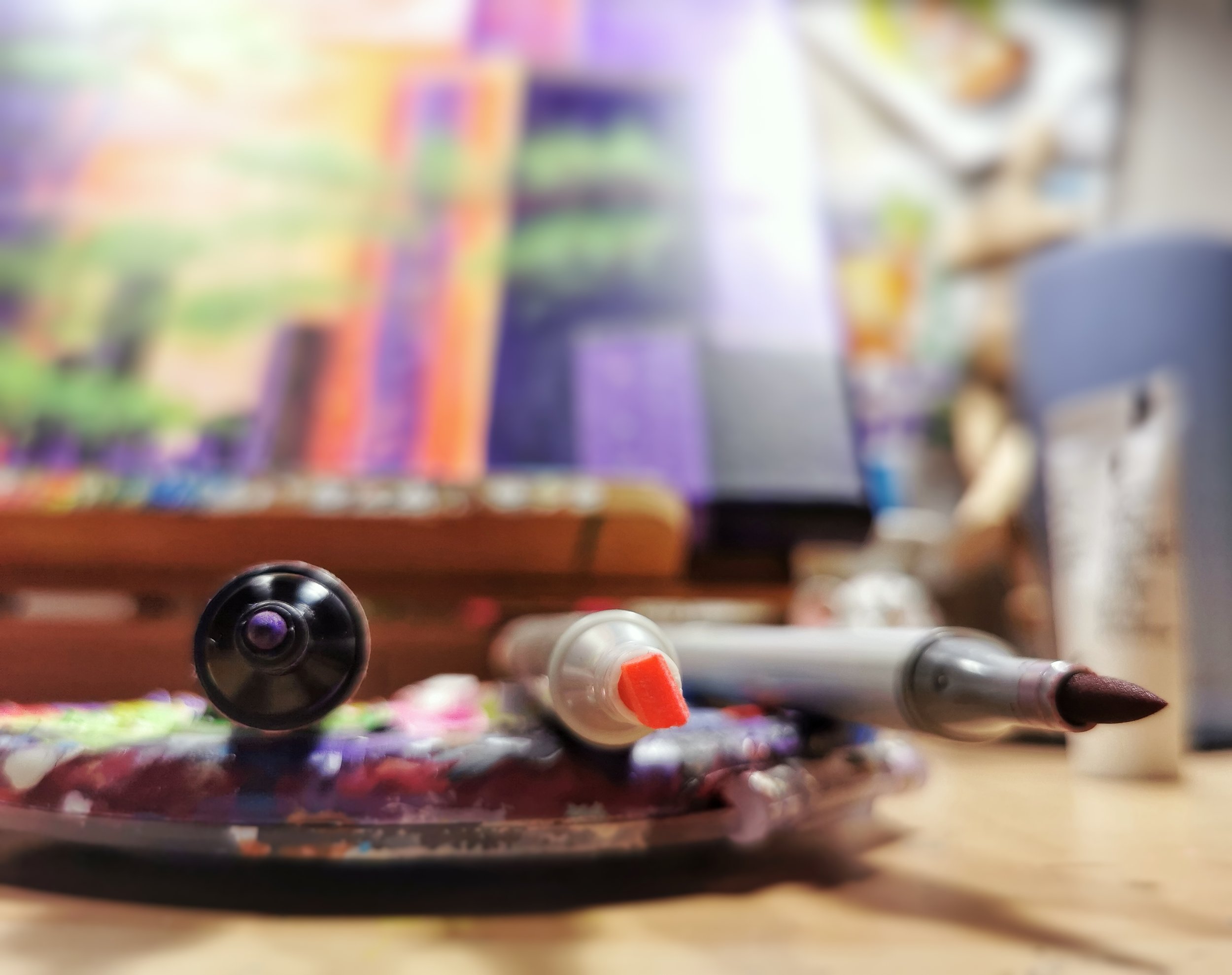
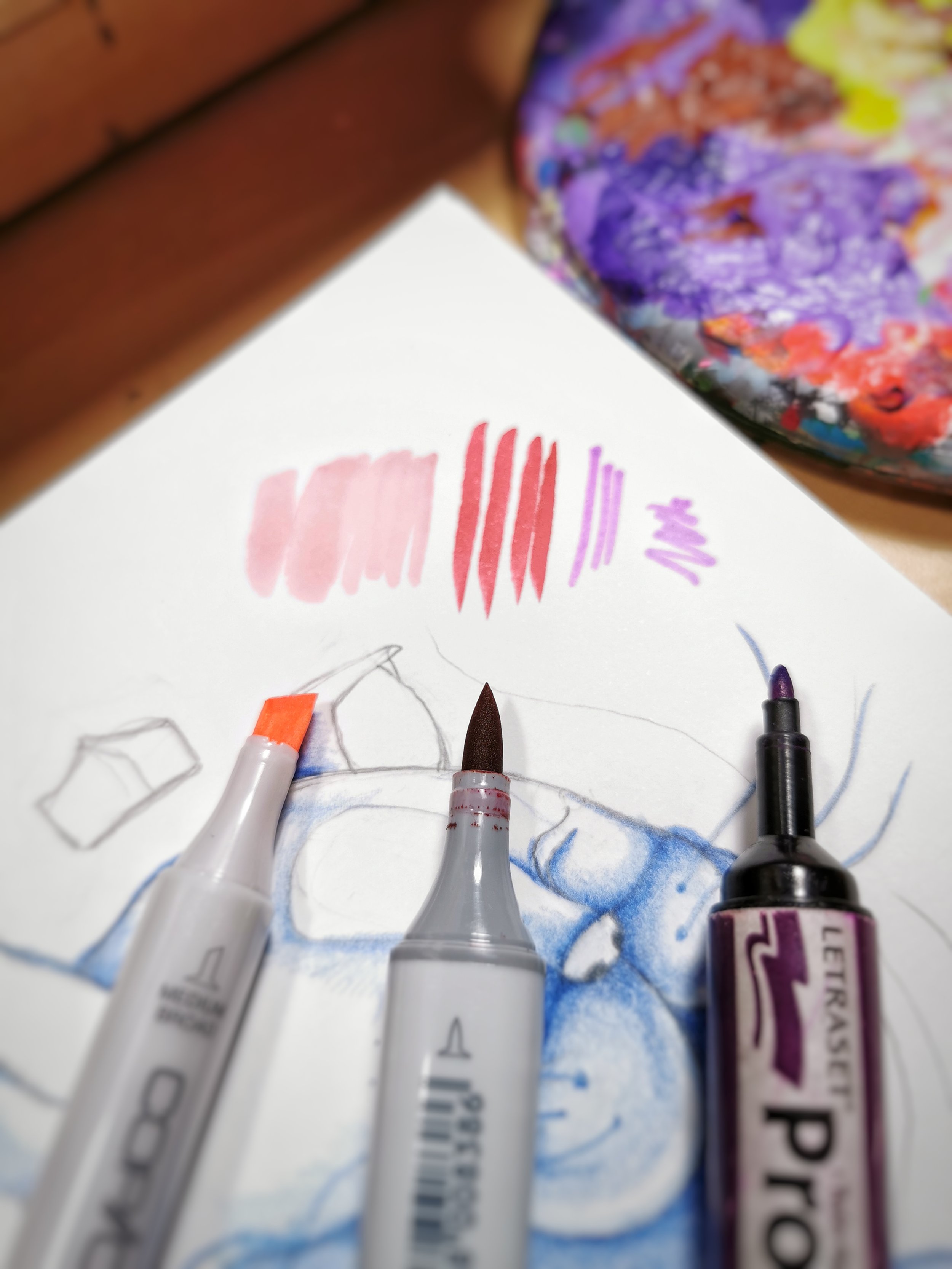
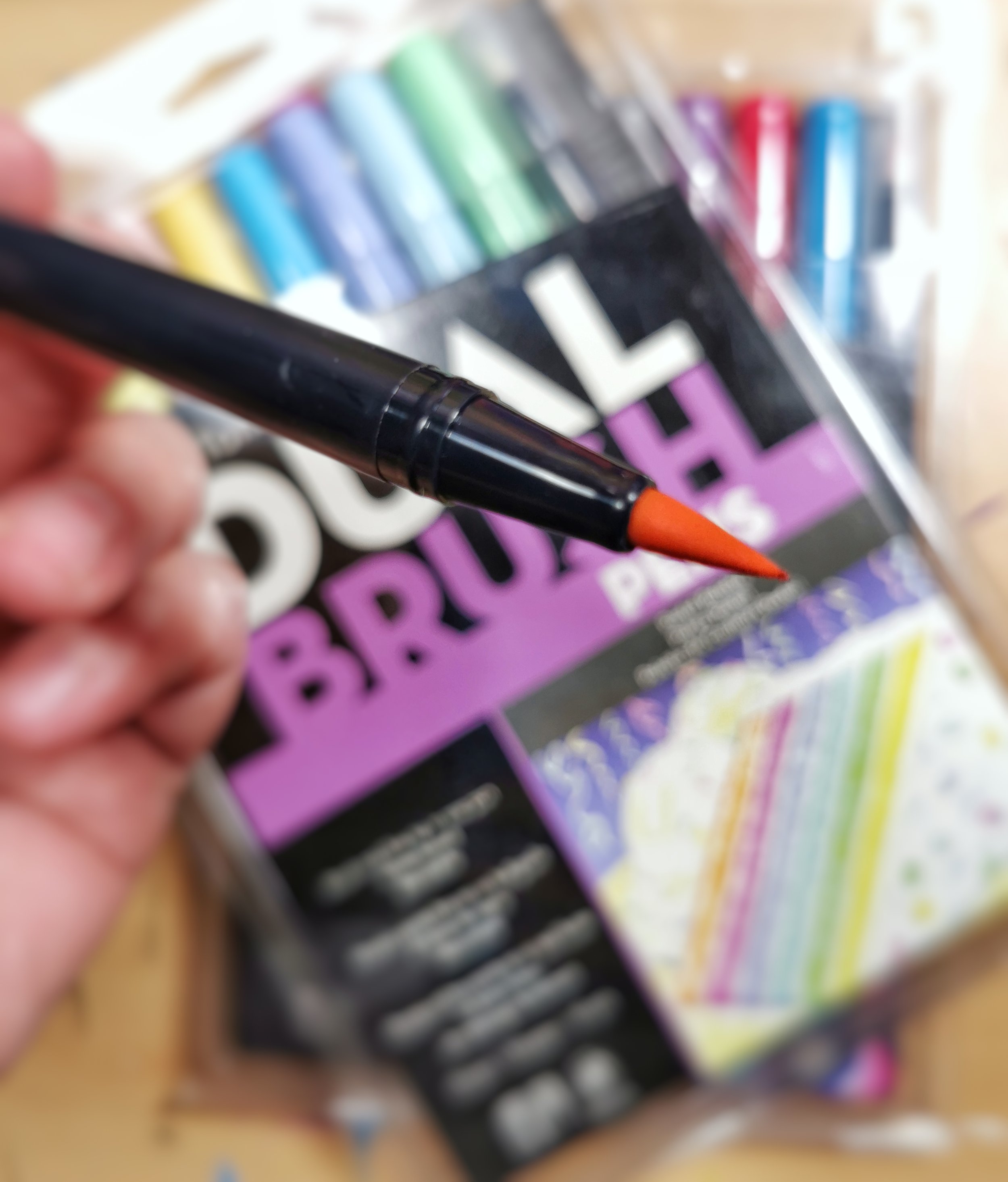



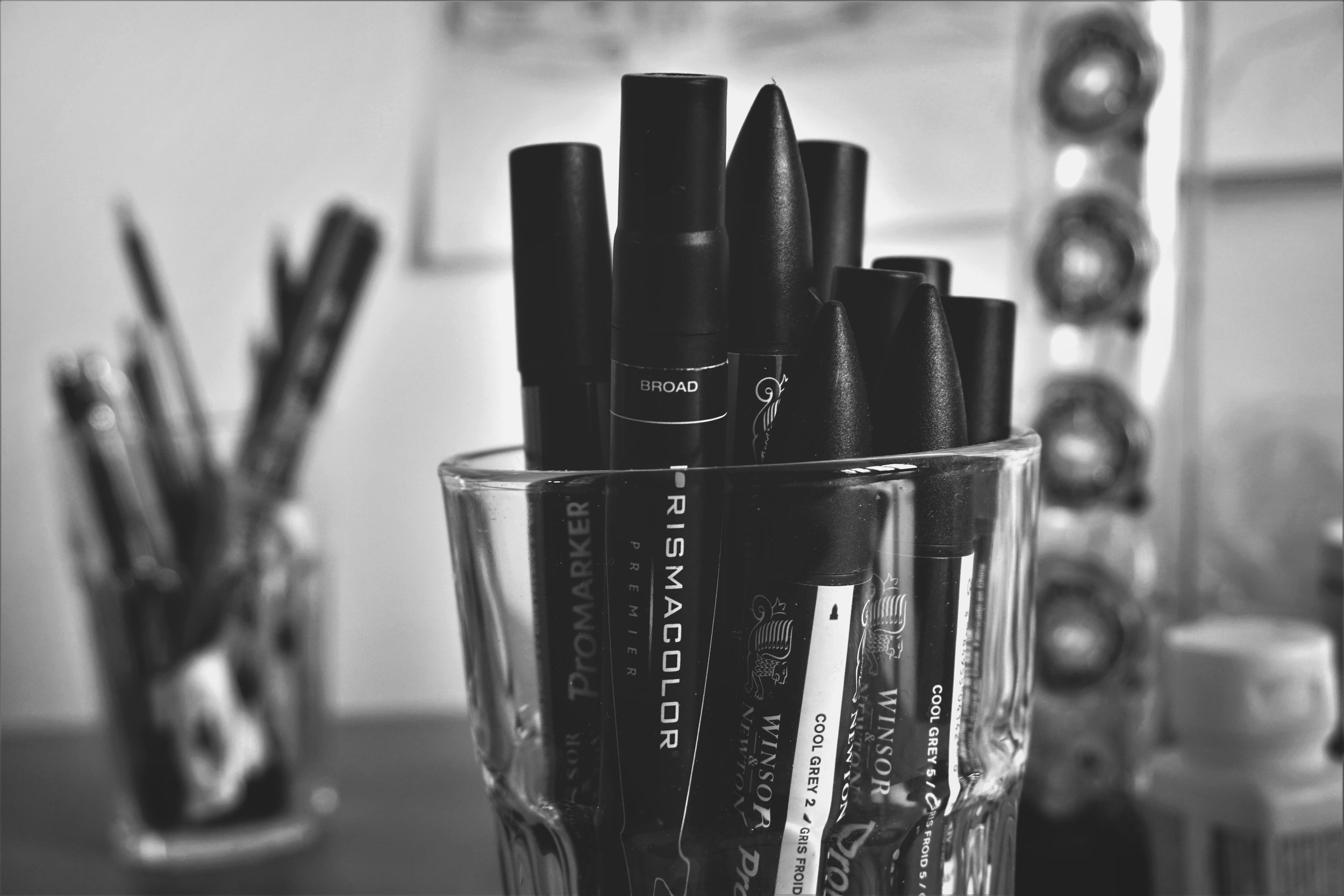

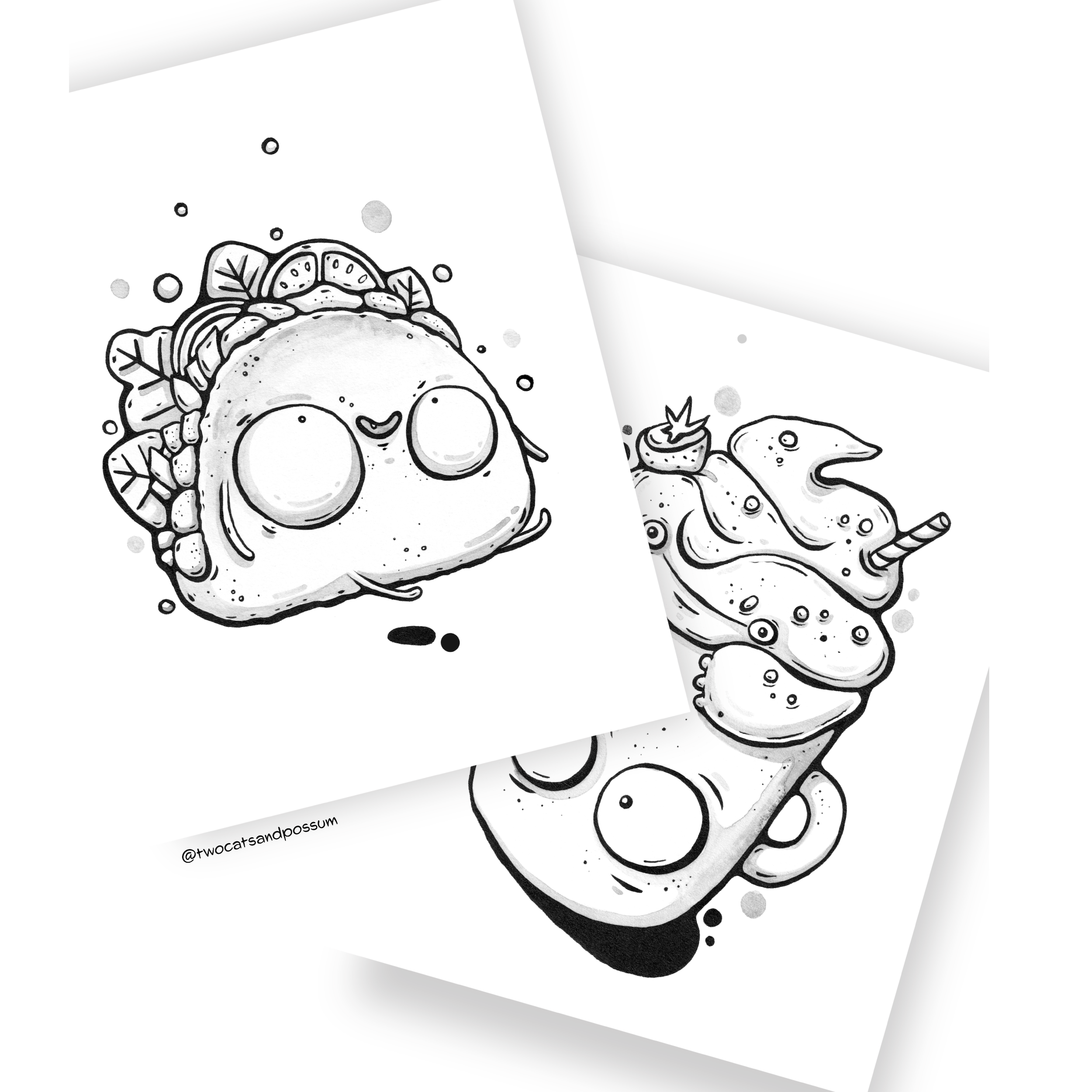


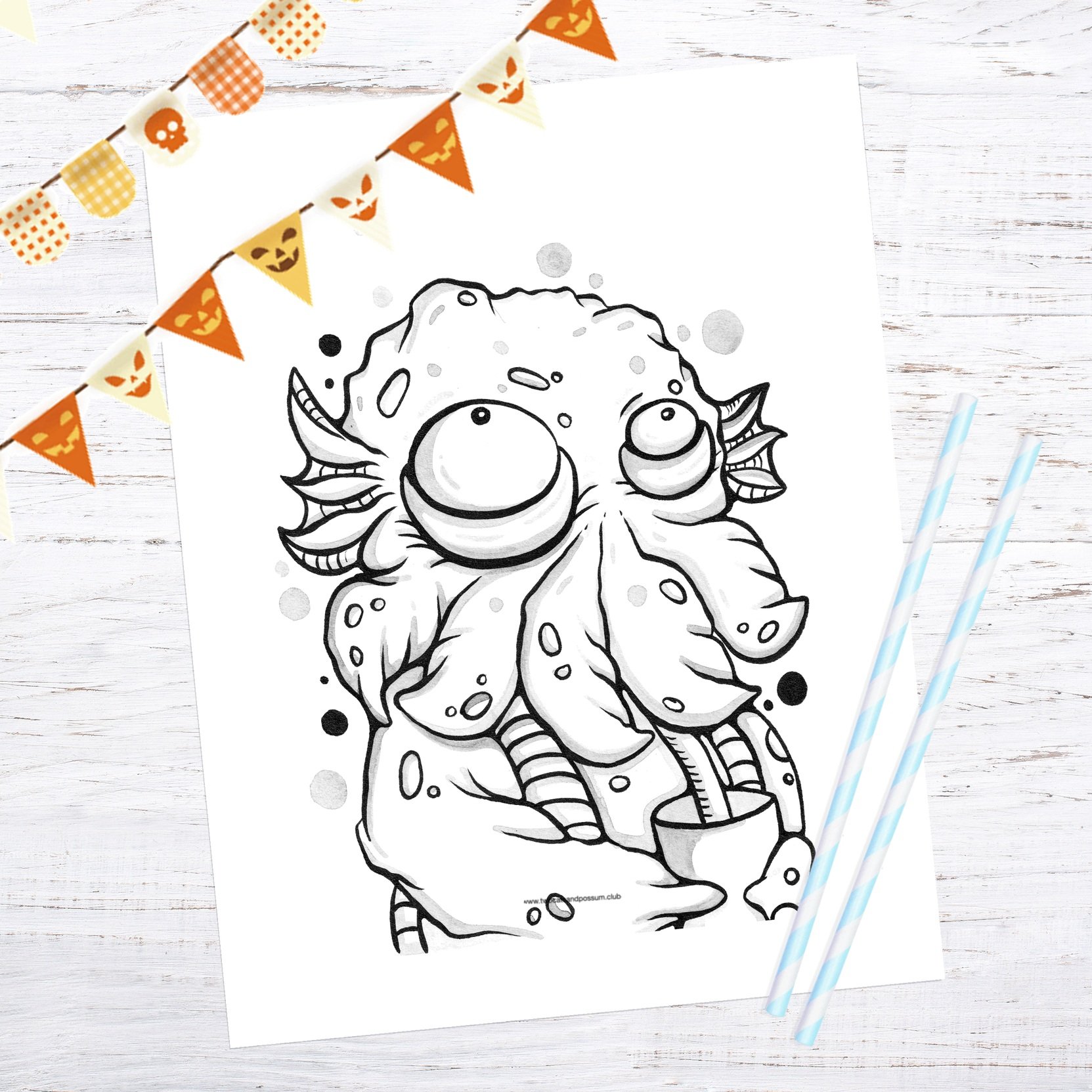








When picking the best adult coloring book markers, think about the ink, tip, and color options.
Water-based markers blend well, while alcohol-based ones give a bold, smooth color.
Fine tips are great for detail work, and brush tips offer flexibility.
Popular choices like Prismacolor, Copic, and Tombow are known for their high quality.
The best coloring book markers depend on your personal style and the type of coloring book you're using.